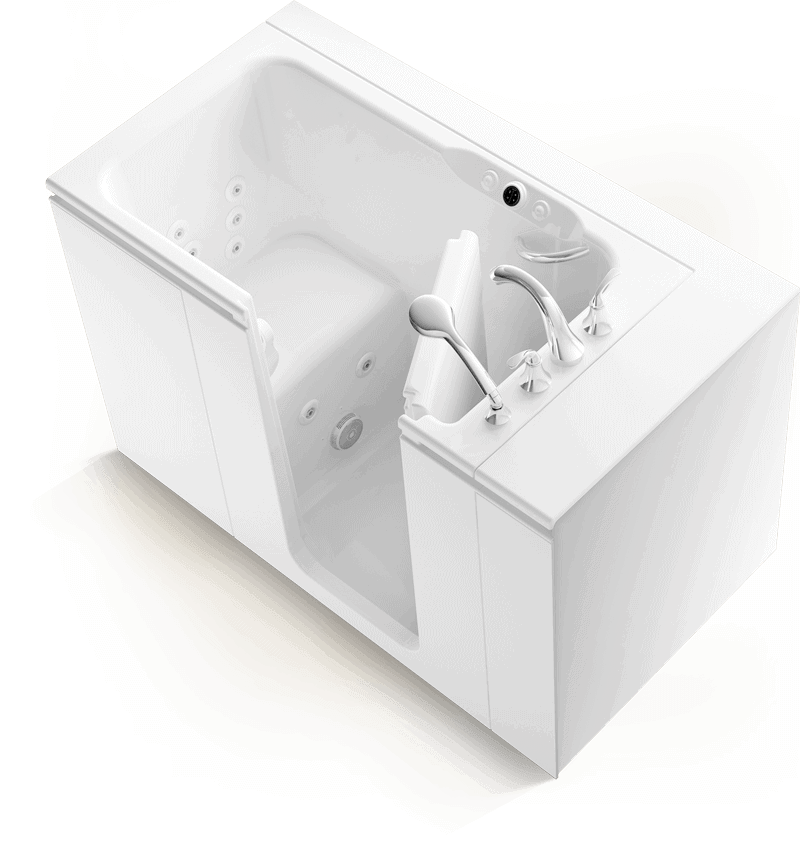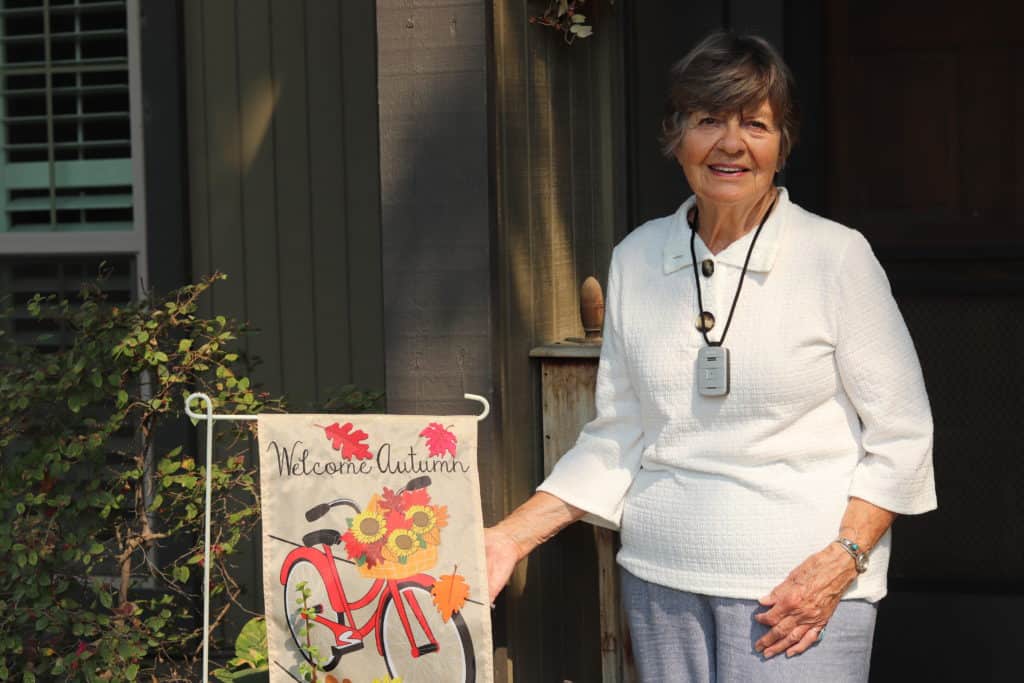Fall Prevention: Fall Safety Tips for Seniors
Check out our top tips for staying safe and preventing falls, including purchasing a medical alert system, removing hazards from the home, and staying on top of your health.
SeniorLiving.org is supported by commissions from providers listed on our site. Read our Editorial Guidelines
As we age, the risk of falling increases, and the mere thought of falling can be frightening. Knowledge and prevention are key to reducing the chances of a dangerous fall within your home. We’re here to help you understand the major causes of falls, why they occur, and how to prevent them. We’ll also cover the essentials of how to safely get up if you fall. Maximize your mobility by following these important guidelines.
Medical Alert Systems for Fall Prevention and Peace of Mind
Falling affects thousands of American seniors every year. The chances of experiencing a serious fall only increase with age, so it’s best to take preventative measures before something happens. One of the best ways to give yourself better peace of mind is a quality medical alert system. With a medical alert system, you get the security of a 24/7 monitoring center at your fingertips. If you want to learn more about how medical alert systems can assist with fall prevention, check out these top-rated providers.
Senior Falls: The Facts and Statistics
Proactively preparing for falls should be a vital part of your life, as the data on falls for older adults shows just how common these incidents are. According to the Centers for Disease Control and Protection (CDC), millions of people aged 65 and older fall each year. In fact, more than one out of four older people fall annually. This endangers both the health and independence of older adults.
A life-threatening fall can also result in major financial strain. The CDC reports that one in five falls causes a serious injury such as broken bones or a head injury. Each year about $50 billion is spent on medical costs related to non-fatal fall injuries, and $754 million is spent related to fatal falls.1
The Main Causes of Falls for Older Adults
Falls can be brought on by many factors. The leading causes of falls for older adults include:
- Environmental hazards around the home
- Medication side effects
- Impaired vision
- Reduction of coordination and balance
- Chronic disorders such as Parkinson's disease, rheumatoid arthritis, osteoporosis, and peripheral neuropathy
While the idea of a fall might be downright scary, it’s not all doom and gloom! There are plenty of proactive ways you can prepare to reduce your risk of a slip or trip. We’ll run you through our top fall safety tips below.
Fall Safety Tips
Health Safety
Your body’s health plays a significant role in fall prevention. Take control of your wellbeing by protecting yourself in the following ways:
- Schedule a visit with your physician for a fall risk evaluation.
- Ask your doctor or pharmacist if your medications (prescription and over the counter) can cause dizziness, sedation, blurred vision, or confusion.2
- Schedule a routine eye exam. Less light reaches the retina in aging eyes, making contrasting edges, tripping hazards, and obstacles harder to see.3
- Maintain a healthy weight.
- Follow a regular sleep schedule and get enough quality sleep.
- Make fitness a priority. Regular exercise improves muscles and makes you stronger. It also helps keep your joints, tendons, and ligaments flexible.
- Avoid drinking alcohol. Mixing alcohol with medication can be a dangerous combination.
- Schedule a hearing exam. Even a mild degree of hearing loss triples the risk of an accidental fall.4
It’s important to address hearing loss and get hearing aids as early as possible to help prevent falls and other related health risks. Not sure if you’re experiencing hearing loss? In the video below, Brad Ingrao, audiologist and hearing expert, will walk you through the early signs of hearing loss to look out for.

Mobility Safety
Are you able to move about your residence safely? Take a moment to examine your home and follow these essential ways to safeguard you and your surroundings:
- Install no-slip tape to tile and hardwood floors.
- Ensure all wall-to-wall carpet is secure.
- Remove any throw or area rugs.
- Keep extension cords tucked away from foot traffic.
- Remove unnecessary floor clutter.
- Use a cane or walker for extra support and balance.
- Swap out laced shoes with Velcro sneakers.
- Wear shoes with non-slip soles. Avoid moving about your house in bare feet, socks, or
- Replace your existing living room chair with a power-lift assist recliner.
- For two-story homes, keep the staircases clear.
- Ensure all stairs have secure handrails on both sides of the stairs.
- Consider installing a stairlift.
Did You Know? Walkers, commode chairs, bath chairs, or lift chairs may be considered Durable Medical Equipment (DME) under Medicare and Medicaid, Veteran’s Benefits, or private insurance. Check with your physician to see if you qualify for free or reduced-cost DME.
Overall Safety
- Keep a list of emergency contacts by every phone.
- Create a plan on how to call for help and who to call.
- Remove unnecessary furniture to create a clear walking path.
- Plug in a nightlight in every room.
- Move kitchen items to lower cabinets to prevent the need for a step stool.
- Have both a lamp and a light switch by the bedside.
- Keep flashlights in each room in case of a power outage.
Bathroom Safety
The bathroom can be a hazardous place for older adults. The combination of wet, slippery floors and hard surfaces can result in painful falls. Safeguard yourself with these bathroom improvements:
- Install wall-mounted grab-bars in the bathtub, shower, and next to the toilet.
- Add a bath or shower chair.
- Replace a traditional shower head with a hand-held shower nozzle.
- Add non-slip mats for the shower and bathtub.
- Install an easy-access walk-in tub from popular brands like Kohler or American Standard.
- Add a raised toilet seat or toilet safety frame with handlebars.
- Ensure the bathroom is well-lit. Always have a night light plugged in.
- Keep necessities such as toilet paper, tissues, and personal care items in an easy-to-reach area.

Kohler's walk-in tub
Did You Know? If you’re interested in installing a walk-in tub, take a look at our picks for the best walk-in tubs for seniors in 2025.
Medical Alert Systems
Help is always just one call away when wearing a medical alert system. A medical alert system can provide a much-needed level of confidence and peace of mind for you and your loved ones. If you fall, all you need to do is press a button on your wearable pendant, and first responders will be sent straight away. Systems with automatic fall detection can even sense a fall and call for help when you can’t press your button.

Our editor's grandma wearing her Bay Alarm Medical alert system at home
There are a multitude of medical alert systems on the market. From our Bay Alarm Medical review to our experience testing out Medical Guardian, we’ve found it’s easy to choose a system that’s customized to your personal needs. There are options for both active seniors who spend time on the go and homebodies. Thanks to developments in technology and design, there are even discreet, high-tech options for those who want something a bit easier on the eyes.
FYI: Take a look at our picks for the best medical alert systems and best fall detection for seniors to find a system for your home!
If you’d like to learn more about the different types of medical alert systems, how they work, and how they can help prevent falls, watch the video below. Jeff Hoyt, our Editor in Chief, walks you through everything you need to know.

What to Do When a Senior Falls
What to Do if You Fall
Despite having all of the safety measures in place, a fall may still occur. This can certainly be an upsetting experience, so it’s crucial to know how to get back up safely. Use the steps below as a guide:
- Do your best to stay calm. Take several slow, deep breaths in through your nose and out through your mouth.
- Carefully examine yourself for injuries.
- If you have a serious injury, such as bleeding, a broken bone, or head trauma, don’t attempt to move. Use your medical alert system or call 911 on your phone.
- If you haven’t suffered a severe injury and feel well enough to get up, look around for the closest piece of sturdy furniture, such as a chair.
- Slowly roll onto your side. From that position, get on your hands and knees.
- Crawl or drag yourself to the piece of furniture you’ve identified. You’ll use this as leverage to pull yourself up.
- Get into a kneeling position and place both hands firmly on the piece of furniture.
- Using your arms to steady yourself, push up with your legs, and slowly turn so that you’re sitting in the chair.
- If you begin to feel dizzy at any point, remain on the floor and call for help.
- No matter how minimal the fall, always alert your loved ones and your doctor of the incident. Falling once doubles your chances of falling again.
Tips for Caregivers and Family Members
If you fall and someone else finds you before you’ve gotten up, it’s essential that they know how to handle the situation and help you up safely. Pass along the tips below to your caregivers, friends, or family members:
- Stay calm and reassure your loved one. Ask them to take deep, steady breaths.
- Look for any injuries. Ask them if they feel any pain and where the pain is located.
- If there are serious injuries, call 911 and tell your loved one not to move. Stay by their side and keep them calm until first responders arrive.
- If there aren’t any serious injuries and the person wants to stand, ensure that they move slowly and carefully. Your loved one needs to be able to lift themselves on their own; don’t lift them yourself. Instead, guide them through the process and offer help and encouragement where needed. If they can’t stand on their own, call for help.
- Help the person roll over and get onto their hands and needs. You can place a towel or blanket on the floor if they suffer from knee pain.
- Put a chair in front of the person’s head. Instruct them to place both hands on the chair to steady themselves and get into a kneeling position. Then, tell them to lean forward, bring one leg forward, and place their foot flat on the ground so that they’re in a kneeling lunge position.
- Grab another chair and place it behind the person. Instruct them to push themselves up, using both their arms and legs and sit back in the chair behind them.
- Ask your loved one to rest in the chair until you both feel that they’re ready to stand without falling again.
- Alert their doctor of the fall straight away and regularly check for injuries or any new pain.
Watch the video below to learn more about senior falls and how to prevent them.

CDC. (2021). Cost of Older Adult Falls.
National Council on Aging. (2021). 6 Steps for Preventing Falls Among Your Older Loved Ones.
American Speech-Language-Hearing Association. (2019). Hearing Loss and the Increased Risk of Falls.
Mayo Clinic. (2021). Fall prevention: Simple tips to prevent falls.




